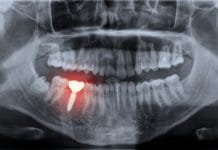The Centers for Disease Control and Prevention (CDC) estimates that 38.4 million people of all ages have diabetes in the United States.1 Diabetes increases the risk of developing periodontal disease. Conversely, treating periodontal disease has been shown to improve diabetic outcomes. It has been suggested that treating periodontal disease could reduce the cost of managing diabetes and improve the quality of life.2
The American Diabetes Association and the CDC recommend oral health care as part of the treatment protocols to manage diabetes. Despite that, evidence suggests that people with diabetes utilize oral health care less than those without diabetes.2
It is suspected that the financial and time burden related to diabetes may be a reason people with diabetes delay seeking oral health care. Nonetheless, there is a lack of studies providing data on the national prevalence of delayed oral health care due to cost among individuals with diabetes.2
A study aimed to “estimate the prevalence of delayed oral health care due to cost among US adults 18 years and older with and without diabetes and to examine associated risk factors.”2
The Study
Data from the Medical Expenditure Panel Survey (MEPS) was collected for the study. MEPS provides estimated measures of access to health care, health care use, expenditures, payment sources, and insurance coverage for a nationally representative portion of the United States population.2
The MEPS has two components: core questionnaires and self-administered questionnaires. Core questionnaires are completed using computer-assisted personal interviewing. This section of the MRPS collects data on demographics, health care use and expenditures, charges and payments, employment, and insurance coverage.2
The diabetes care survey is part of the self-administered questionnaire component of the MEPS. It has 14 questions regarding diabetes complications, such as eye and foot checks and diabetes management.2
The population of interest for this study was United States civilian noninstitutionalized adults 18 years and older. After reviewing the data, a sample size of 42,931 people was included in the study.2
The outcome variable for the study was delayed oral health care due to cost. This was assessed by a self-reported yes or no answer to the question: “Now please think only about dental care. In the last 12 months has dental care (including check-ups) been delayed for [you] or anyone in the household because of worry about the cost?”2
The primary independent variable was diabetes status. This was defined by a self-reported yes or no answer to the following question: “Have you [or anyone in the household] ever been told by a doctor or other health professional that [you/he/she] had diabetes or sugar diabetes, other than during pregnancy?” It is important to note that MEPS does not distinguish between diabetes types 1 and 2.2
Covariates were based on the Anderson Behavioral Model for health services, which helps identify factors that could impede the use of health services. The following are the covariates that were chosen for this study based on this model:2
- Age
- Sex
- Race
- Ethnicity
- Education
- Marital status
- Smoking status
- Comorbidities or diabetes-related complications (self-reported heart disease, stroke, diabetes-related kidney damage, or eye problems)
- Geographic location (Northeast, Midwest, South, and West)
- Income
- Medical insurance coverage
- Dental insurance coverage
- Self-reported general health status
The Results
Of the 42,931 adults included in the study, 5,392 reported having diabetes. Compared to those without diabetes, people with diabetes were more likely to be:2
- Male
- 45 years or older
- Non-Hispanic Black
- Less educated
- Married
- Low income
- Covered by public health insurance only
- Lacking dental insurance coverage
- Fair or poor general health status
- Living in the South
Adults without diabetes who delayed oral health care were more likely to be:2
- Lacking medical and dental insurance
- 45 through 64 years old
- Current smokers
- Fair or poor general health status
- Low income
The prevalence of delayed oral health care was higher among those with diabetes. The study results prior to controlling for covariates indicated that 19.5% of participants with diabetes delayed oral health care, compared to 15.5% of those without diabetes. After controlling for covariates, the results suggest that 18% of participants with diabetes delayed oral health care, while 16% of participants without diabetes delayed oral health care. Though the difference was attenuated, it remained significant.2
Adults with diabetes who had no medical insurance were almost twice as likely to delay oral health care when compared to those with private insurance.2
Though the prevalence of delayed oral health care among those with diabetes was higher, these results also show a significant prevalence of delayed oral health care due to costs among adults without diabetes. This highlights the financial barriers in the United States to receive needed oral health care for all adults. Compared to other health care types, oral health care has the highest level of financial barriers.2
Living in the Southern United States was a geographic predictor for delayed oral health care. Notably, Southern states have higher rates of diabetes, poverty, and lack of health insurance.2
However, a geographic predictor for participants without diabetes that delayed oral health care was living in the Midwest and West. Participants living in the Northeast were the least likely to delay oral health care due to cost.2
This study had some limitations. First, much of the data was self-reported, which could lead to diagnosis and recall bias. Second, it is possible the association between diabetes and delayed oral health care could be due to multiple other factors, such as dental anxiety, dental phobia, poor oral health literacy, and personal beliefs about oral health care that the MEPS did not measure.2
Third, the sample size was limited due to the COVID-19 pandemic. Though the sample size could have been larger, the sample size in this study was adequate and could arguably be considered a strength rather than a limitation. Additionally, the pattern of care among participants could have been altered due to the COVID-19 pandemic.2
Lastly, self-rated health status is not solely based on clinical health status. A more comprehensive evaluation of health includes a person’s subjective perception of the biological, psychological, and social dimensions of health.2
Conclusion
Approximately one in every six adults in the United States with diabetes delays oral health care due to cost. This delay can lead to adverse health outcomes, including worsening of periodontal disease, which is known to exacerbate insulin resistance. Conversely, untreated diabetes can increase the risk of complications of periodontal disease as well, potentially resulting in tooth loss.2
The prevalence of delayed oral health care is higher among individuals with diabetes who were uninsured, had low incomes, lived in the Southern United States, or rated their overall health as fair or poor.2
Comprehensive insurance coverage is critical in increasing access to oral health care. National data indicates that people with diabetes and private insurance paid around $4,800 in additional out-of-pocket costs in 2017. This suggests that even with dental insurance, out-of-pocket cost is a concern.2
Promoting health policies that increase access to oral health care could reduce the prevalence of delayed oral health care. Proposed solutions suggested by the authors include expanding access to dental care through comprehensive health insurance coverage, integrating medical and dental services, and expanding the roles of allied dental providers to allow preventive services.2
Future research should assess the effectiveness of these approaches in reducing cost-related delays in oral health care.2
This study contributes to the growing body of evidence that provides valuable insights for policymakers and stakeholders seeking to develop interventions and programs that promote better oral and overall health for people with chronic conditions, particularly diabetes.2
Before you leave, check out the Today’s RDH self-study CE courses. All courses are peer-reviewed and non-sponsored to focus solely on high-quality education. Click here now.
Listen to the Today’s RDH Dental Hygiene Podcast Below:
References
- National Diabetes Statistics Report. (2024, May 15). Centers for Disease Control and Prevention. https://www.cdc.gov/diabetes/php/data-research/index.html
- Akinlotan, M.A., Wei, L., Thornton-Evans, G., et al. Delayed Oral Health Care due to Cost among US Adults with Diabetes, 2018-2019. J Am Dent Assoc. 2024; 155(11): 926-934. https://jada.ada.org/article/S0002-8177(24)00449-5/fulltext











